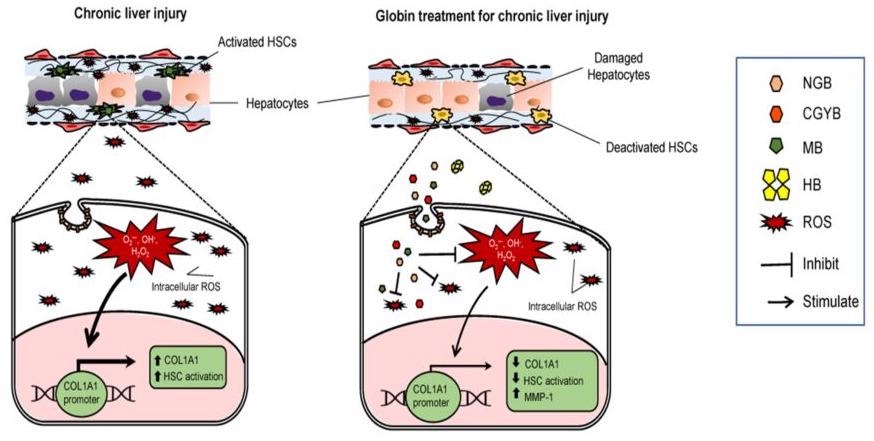Reviewed by Danielle Ellis, B.Sc.Mar 24 2022
Anti-fibrotic therapy is still a medical necessity in the treatment of chronic liver disease in humans. The anti-fibrotic activity of globin family members in hepatic stellate cells (HSCs), the principal cell type involved in liver fibrosis, was reported by a research group led by Professor Norifumi Kawada of Osaka Metropolitan University (OMU).

Image Credit: Osaka City University
Injections of myoglobin (MB), (neuroglobin) NGB, and (cytoglobin) CYGB decrease liver inflammation and fibrosis in animals with severe liver fibrosis.
The roles of members of the globin family have been widely researched, with an emphasis on the tissues in which they are conveyed: hemoglobin (HB) in erythrocytes, MB in muscle cells, NGB in neurological tissues, and CYGB in pericytes and fibroblasts.
Aside from heme-containing proteins’ well-known oxygen-binding respiratory functions, all globins are found to be involved in the regulation of damaging reactive oxygen species (ROS), shielding cells from oxidative stress.
Liver fibrosis occurs after repetitive and long-lasting injury or inflammation in the liver. These injuries are accompanied with the accumulation of ROS that activate HSCs, followed by collagen production.”
Dr Norifumi Kawada, Professor, Osaka Metropolitan University
Dr Kawada discovered that when they cultured human HSCs under globin treatments, MB, NGB, and CYGB entered the cellular organelles, hunted intracellular damaging ROSs, and reduced the direct signal regulating collagen formation. “Results showed the antioxidant capacity of the globins to be greater than the well-documented glutathione and even vitamin C,” adds Dr Kawada.
This is fantastic news for three globin family members, however, what happened to HB? “We noticed that hemoglobin did not enter the cell,” explains Dr. Thuy, “we speculate this is due to size as HB is 4 times the size of its monomer siblings.”
Dr Kawada and his team next used chemical agents to create a mouse model of severe liver fibrosis then administered MB, NGB, and CYGB by intravenous injection. Surprisingly, the therapeutic protein significantly reduced liver inflammation and fibrosis while having no negative side effects.
PhD fellow Hieu specifies, “in addition to the liver, we focused on possible side effects with the neighboring kidney. Creatinine levels remained normal throughout the treatment.”
The study team intends to build a foundation for a potential liver fibrosis therapy in the coming years with this discovery.
Source:
Journal reference:
Hieu, V. N., et al. (2022) Capacity of extracellular globins to reduce liver fibrosis via scavenging reactive oxygen species and promoting MMP-1 secretion. Redox Biology. doi.org/10.1016/j.redox.2022.102286.